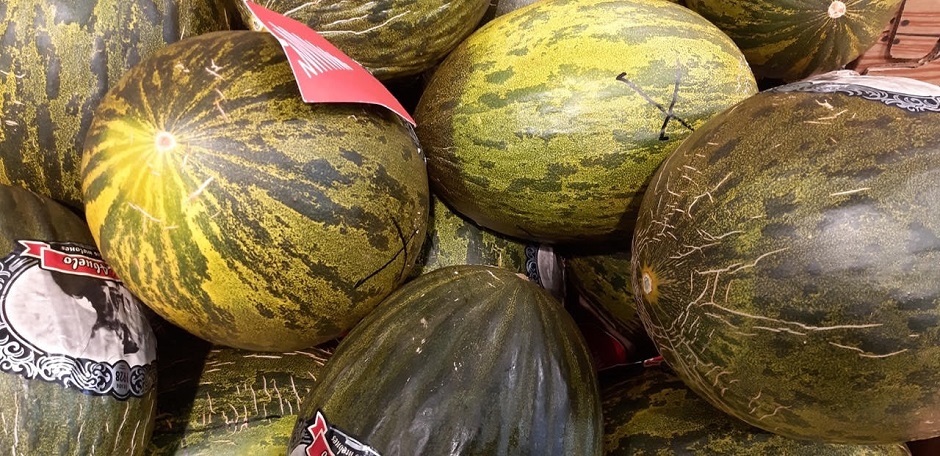The melons of Egypt
Melons were grown in Egypt during the third millennium before Christ. The fruit can have either a spherical or elliptical appearance and its weight ranges from 400 grammes to 20 kg, though it rarely exceeds 5 kg.
01 NOVEMBER 2020 · 11:00 CET

We remember the fish we ate in Egypt at no cost—also the cucumbers, melons, leeks, onions and garlic. (Nm. 11:5)
The Hebrew word translated as “melons” in this Old Testament quote from the book of Numbers is ’abhattikhim’, which is the plural of abattíakh. In the Septuagint, the Greek word is pépones, and in the Latin Vulgate the word used is pepones, both of which refer to the common melon (Cucumis melo) which was grown in Egypt. Nevertheless, an ancient Egyptian, the word buttuga (from which the Arabic word bottikh derives) mainly denoted the watermelon (Citrullus lanatus) and, in second place, melons. There are no references to watermelons in the Bible, and hardly any to melons, which were also abundant in ancient Palestine (Is. 1:8).
This quote from Numbers 11:5 refers to the complaints of the Israelites in the desert of the Sinai Peninsula, when they reminisced about the tasty melons, and presumably watermelons, that they used to eat in Egypt. Both species, which belong to the same botanical family of the Cucurbitaceae, were common in the land of the Nile river, and now remembered by the Israelite pilgrims in the dry sterility of the desert, as they were very juicy, refreshing fruits.
Melons were grown in Egypt during the third millennium before Christ. They are native to the Anatolian Peninsula, Iran and the Caucasus, through they soon spread as far as Afghanistan and India. It is a berry-shaped fruit, which can have either a spherical or elliptical appearance and its weight ranges from 400 grammes to 20 kg, or more, though it rarely exceeds 5 kg.
It has a creeping, cylindrical stalk, measuring between one and three metres long, at the end of which there is an inflorescence rather like an ear of corn. Its roots can reach a depth of two metres. The colour of the skin, or the epidermis, and the edible flesh, varies greatly, and depends on the particular subspecies. It can be white, pink, orange, grey, greenish etc., with a smooth, rough of reticulated texture. In the centre of the melon there is a cavity containing the seeds, which are covered by a sticky substance. The flesh is 90% water, and contains very few calories (34 for every 100 grammes), and very little sodium (16 mg%). However, its high fibre content generates a feeling of being full.
In the 17th century, the theologian Thomas Le Blanc, wrote the following: “But this divine help and protection is no mere hut in a melon field or shed in a vineyard, which can be destroyed and disappear in a moment; nor is it a tent pitched in a desert and abandoned in an instant by the wayfarer. It is a strong tower, a paternal home, the home of the wealthiest and most powerful Father, within which our entire earthly life is spent, enjoying the very best of everything.” [1]
Notes
[1] Spurgeon, C. H., The Treasury of David.
Published in: Evangelical Focus - Zoe - The melons of Egypt
